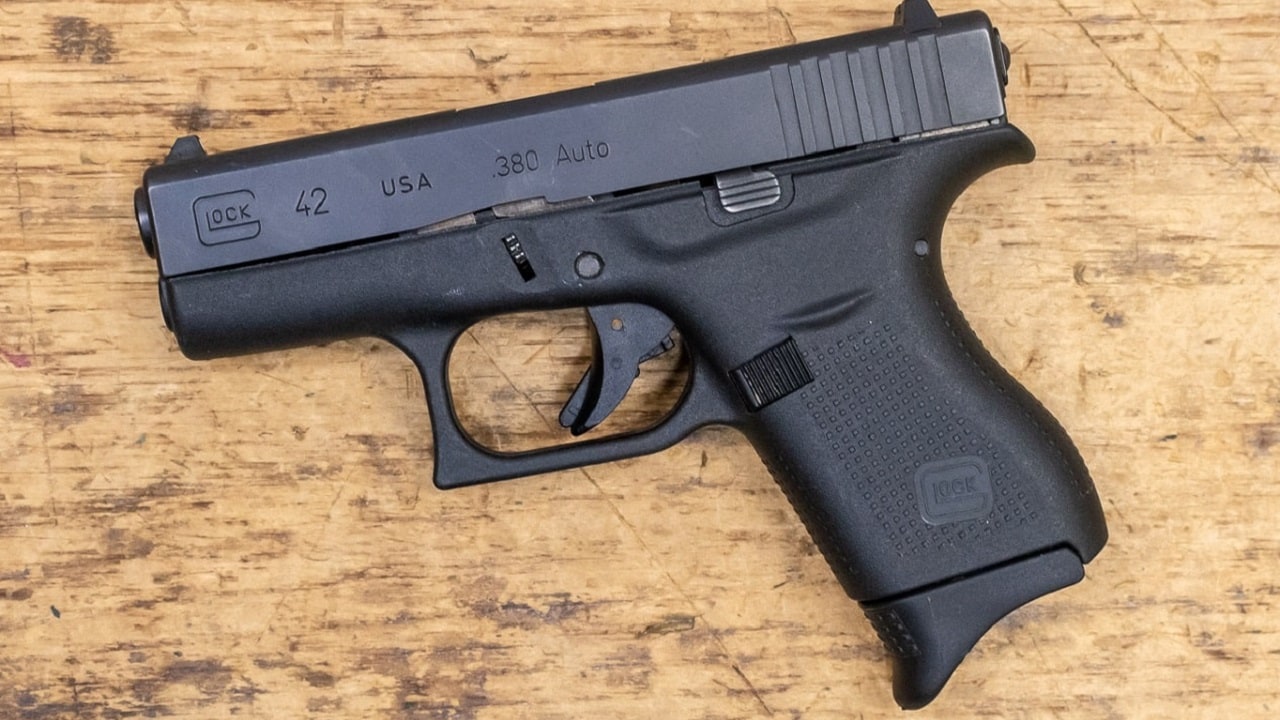Many self-defense experts, including John S. Farnam and Massad F. “Mas” Ayoob, consider the .380 ACP (Automatic Colt Pistol) – aka the 9mm Corto, 9mm Kurz, 9x17mm, “9mm Short” (as “Q” called it in the 007 film “Skyfall”) – to be marginal, the absolute bare minimum handgun caliber acceptable for defensive purposes. Other experts, typically those faithful to the large-bore persuasion, dismiss it altogether as a totally unworthy “mouse gun.” But as the saying goes, “A hit with a .22 beats a miss with a .44 Magnum,” and the .380 is certainly more powerful than a .22.
After 105 years of existence, the .380 ACP dang sure ain’t going anywhere. Hard to swallow as this may be for some folks, it was invented by the same gunmaker genius who gave us the perennially popular and powerful .45 ACP cartridge, the legendary John Moses Browning. And what’s more, no less a man’s man than General George S. Patton carried a .380 pocket auto as a backup to his beloved ivory-handled revolvers.
With that sense of ballistic and historical perspective, let’s look at the best defensive loads for the oh-so-maligned .380 ACP.
Winchester Silvertip 85-Grain Jacketed Hollowpoint (JHP)
Evan Marshall’s controversial one-shot stop statistical studies of the late 1980s and early 1990s showed the Winchester Silvertip to be the best-performing bullet in the caliber available at the time. Similar studies by Mas Ayoob corroborated this. As Ayoob wrote in his excellent 1987 book “The Semiautomatic Pistol in Police Service and Self Defense”:
“This round has an extremely consistent rate of expansion and almost never exits the body with a solid hit, despite the low velocity. This does not mean that every perpetrator shot with it drops like a rock. The Silvertip allows the .380 to spend all its energy inside the hostile target, but being a low-powered round, it doesn’t have that much energy to spend. Fortunately, the .380 is accepted to be a last-ditch weapon used by undercover people who need to appear unarmed, by off-duty officers in the lowest possible threat scenarios, and by officers who are acutely conscious of size and bulk in a backup weapon and, absent the small, flat .380 auto, might carry no backup at all.”
By contrast, the FBI’s infamous “Wound Value” ratings from the Bureau’s 1990 ballistic gelatin tests actually (and stupidly, I daresay) assigned the .380 Silvertip a negative Wound Value! This prompted “Mas” Ayoob, in an article published roughly four years after his above-quoted book to sarcastically ask, “Does this mean if you were to be shot with it, you’d actually feel better?”
Federal 90-Grain Hydra-Shok JHP
I first read a review of the .380 Hydra-Shok in an article by Cpl. Ed Sanow – Evan Marshall’s co-author of those one-shot stop books – written for Combat Handguns Magazine Cpl. Sanow praised the gun’s reliability and combat accuracy as well as its performance in ballistic ordnance gelatin. This is not surprising, as Hydra-Shok has been a consistently excellent performer “on the street,” particularly in .45 ACP.
95-grain Full Metal Jacket (FMJ) “Hardball”
Yes, miserable old non-expanding hardball makes the list. The reason is the longstanding concern that .380 hollowpoints either (A) don’t expand reliably or (B) if they do expand, don’t penetrate deeply enough to reach vital organs, even though modern bullet technology has done much to alleviate that old concern. In other words, the “better safe than sorry” option. It’s also advisable if you have an older military-spec gun that’s not throated to feed JHPs.
Any major brand will do when it comes to ball ammo, the most prominent among them being Winchester USA White Box or Federal American Eagle.
Corbon 70-Grain Pow’RBall
Going back to what I just said about military surplus guns designed only for hardball … well, Corbon is an ammo maker long known for dynamic-performing bullets, so I’ll let the manufacturer speak for itself via the official product info page:
“We knew we needed to solve this problem by coming up with a round that looks and feeds like hardball ammo, but perform like a reliable hollow-point round. In 2004, Peter Pi, Sr. made bullet history. He believed that if he reshaped the bullet cavity, placed a polymer ball on top and crimped it in place it would solve the problem. The idea was so unique he was awarded a U.S. Patent #6,792,869. The patented Pow’RBall design enhances feeding in those finicky pistols but it also delays the expansion of the projectile when it hits soft tissue, making it a more controlled expansion bullet.”
Hornady Critical Defense 90-Grain FTX
This is another one of those ammo lines that seems to have solved the long-vexing issue of properly balancing expansion and penetration in the .380 caliber. As Robert Carlson wrote earlier this week for The Gun Zone:
“The name of this cartridge tells it straight! This Critical Defense JHP (Jacketed Hollow-Point) brass-cased round from Hornady is boxer-primed, non-corrosive, and reloadable. It has a 90 grain load and comes with their patented Flex Tip bullet … The design differs from the majority of hollow point bullets because the Flex Tip bullet includes a soft polymer insert. When fired, it gives reliable and controlled expansion, which is needed should you need to defend yourself.”
Christian D. Orr is a Senior Defense Editor for 19FortyFive. He has 34 years of shooting experience, starting at the tender age of 14. His marksmanship accomplishments include: the Air Force Small Arms Ribbon w/one device (for M16A2 rifle and M9 pistol); Pistol Expert Ratings from U.S. Customs & Border Protection (CBP), Immigration & Customs Enforcement (ICE), and the Federal Law Enforcement Training Center (FLETC) Criminal Investigator Training Program (CITP); multiple medals and trophies via the Glock Sport Shooting Foundation (GSSF) and the Nevada Police & Fires Games (NPAF). Chris has been an NRA Certified Basic Pistol Instructor since 2011.
From the Vault
‘You Really Oughta Go Home’: F-22 Raptor Stealth Fighter Flew Under F-4 From Iran

